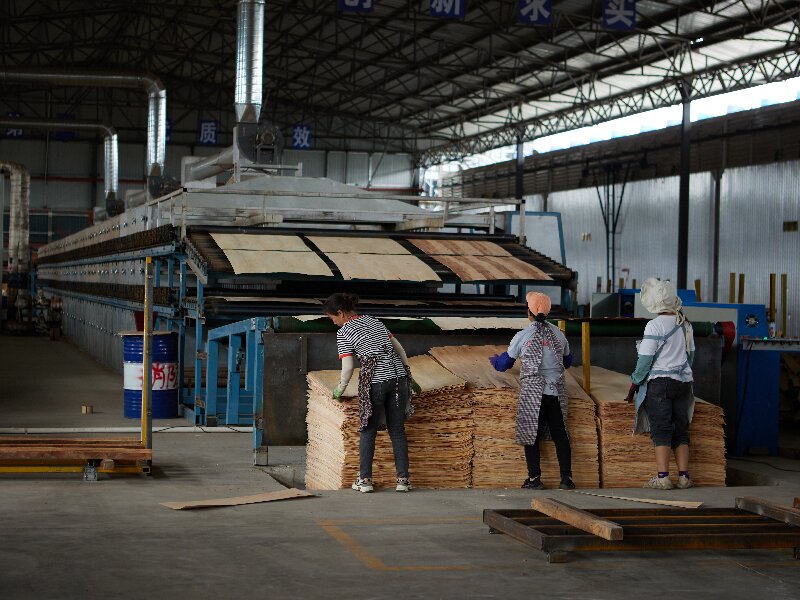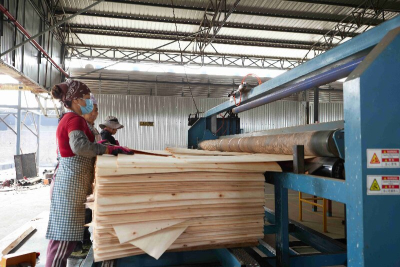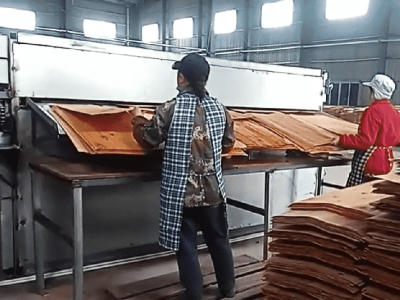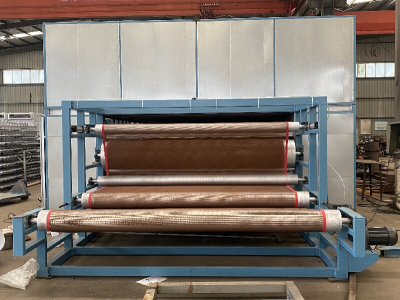Shine Revolutionizes Southeast Asian Wood Processing with High-Tech Four-Layer Veneer Dryer Installation in Thailand
BANGKOK, Thailand – In a significant move set to reshape the regional wood processing landscape, Shine Woodworking Machinery Co., a leading Chinese manufacturer renowned for its innovative drying solutions, is currently in the advanced stages of installing a state-of-the-art, fully automated four-layer wood veneer dryer at a major manufacturing facility in Thailand. This landmark project represents not just a machinery sale, but a technological leap for the Thai timber industry, promising unprecedented levels of efficiency, output, and product quality.
The installation, a cornerstone of the client's multi-million-dollar facility expansion, underscores a growing trend in Southeast Asia: the shift towards advanced automation to meet rising global demand for high-quality engineered wood products, while navigating challenges related to skilled labor and energy efficiency.
The Heart of the Operation: The Four-Layer Veneer Dryer
At the core of this ambitious project is Shine's flagship veneer dryer model, the SH-VD4-3000. This colossal machine is a marvel of modern engineering, designed specifically for high-volume production environments. Unlike traditional single or double-layer dryers, the four-layer configuration represents a paradigm shift in drying technology.
"The decision to invest in a four-layer system was driven by our need for a quantum increase in capacity without a corresponding increase in our factory's footprint," explained the Production Director of the Thai client company, who spoke on condition of anonymity due to competitive sensitivities. "Shine's solution was the most compelling. It effectively quadruples our drying capacity within the same space previously occupied by a single-layer system. For a growing business like ours, that spatial efficiency is as valuable as the machine itself."
The veneer dryer operates on a continuous flow principle. Green, moisture-laden veneers, precisely clipped to size, are automatically fed into the top layer. An intricate system of conveyor chains and mesh belts gently transports the thin sheets through the four separate drying chambers. Each chamber is equipped with independent temperature, humidity, and airflow control systems, managed by a centralized Programmable Logic Controller (PLC).
This level of control is critical for handling the diverse species of wood common to the Thai and Southeast Asian market. "We process everything from delicate Acacia and Hevea (Rubberwood) to more demanding species like Teak," the Production Director added. "The dryer's intelligent system allows us to create and save customized drying curves for each species and thickness. This ensures that every sheet, regardless of its position in the dryer, receives perfectly uniform treatment."
Automation: The Key to Unprecedented Efficiency and Quality
The term "highly automated" is central to understanding the transformative impact of this installation. The automation extends far beyond the drying process itself, encompassing the entire material handling workflow.
1. Automated Loading and Unloading: The system is integrated with automated feeding conveyors that take veneer directly from the clipping line. Robotic arms or paddle systems then stack the veneers onto the dryer's loading carriage with precision, eliminating manual handling that can cause tearing or scratching. At the output end, a similar automated system receives the dried veneers, stacks them, and prepares them for the next production stage.
2. Intelligent Process Control: The PLC is the brain of the operation. Operators simply select the pre-set recipe for the batch being processed. The system then automatically adjusts all parameters – from initial heating and dehumidification to final conditioning. Real-time sensors continuously monitor the moisture content (MC) of the veneer exiting the machine. If the MC deviates from the target, the system makes micro-adjustments in real-time, ensuring consistent quality batch after batch.
3. Energy Recovery and Sustainability: A key feature of Shine's design is its advanced heat recovery system. The hot, moist air extracted from the drying chambers is not simply vented. Instead, it passes through a heat exchanger, which captures the thermal energy and uses it to pre-heat the fresh, dry air entering the system. This closed-loop approach reduces energy consumption by up to 30% compared to conventional dryers, a significant advantage in an era of rising energy costs and heightened environmental awareness.
"The automation drastically reduces our reliance on manual labor for strenuous and repetitive tasks," the Thai director noted. "This not only cuts labor costs but, more importantly, minimizes human error. The quality of our dried veneer is now determined by the precision of the machine, not the fatigue level of an operator at the end of a long shift. The consistency is remarkable."
The Thailand Case Site: A Strategic Investment in a Key Market
The choice of Thailand as the case site for this advanced installation is highly strategic. Thailand has long been a hub for furniture manufacturing and wood exports. Its robust rubberwood plantation industry provides a steady, sustainable supply of raw material. However, to maintain a competitive edge in the global market, Thai manufacturers must continually upgrade their technology to improve quality and efficiency.
This Thailand case site serves as a powerful reference for the entire ASEAN region. The client company is a well-established exporter of veneer and laminated wood products to markets in Europe, North America, and Japan – all regions with stringent quality standards.
"Before this investment, our bottleneck was the drying process," the director confessed. "Our old dryers were inconsistent. We would experience issues like over-drying, which makes the veneer brittle and prone to cracking, or under-drying, which can lead to mold and staining in shipment. These quality rejections were costing us dearly. The new Shine veneer dryer has given us a definitive competitive advantage. The color of the dried wood is uniform, the moisture content is exactly as specified by our clients, and the structural integrity is preserved. We are now confident in taking on larger, more demanding orders."
The installation process itself has been a complex undertaking, involving a team of engineers from both Shine and the client company. "The collaboration has been excellent," the director said. "The Shine team has been on-site for weeks, overseeing the assembly, electrical wiring, and integration with our existing production lines. Their expertise has been invaluable in ensuring a smooth and timely commissioning."
A Closer Look at the Quality Output: Why Drying Matters
To the untrained eye, drying might seem like a simple process of removing water. In the world of wood veneer, it is a delicate art and an exact science. The primary goal is to reduce the moisture content of the veneer from around 60-80% (green) to a stable 6-10%, suitable for gluing and finishing.
Improper drying can lead to a host of defects:
Case-Hardening: The outer surface dries too quickly, sealing in moisture and creating internal stresses that cause warping or cracking later.
Brittleness: Over-drying removes too much moisture, making the veneer fragile and difficult to handle.
Discoloration: Uneven temperature and humidity can cause dark spots or uneven color, ruining the aesthetic appeal of the wood.
Shine's four-layer dryer addresses these issues through its multi-stage process. The initial stage uses lower temperatures and higher humidity to gently heat the veneer without causing case-hardening. The main drying stage then efficiently removes the bulk of the moisture. Finally, a conditioning stage ensures any remaining moisture is evenly distributed throughout the sheet, resulting in a stable, flat, and stress-free product.
"The final quality is visibly superior," confirmed a quality control manager at the Thai plant. "The sheets are flat, the grain is vibrant, and the texture is perfect for lamination. Our clients have already noticed the improvement in the sample shipments we've sent."
The Future is Automated and Efficient
The successful installation and impending commissioning of this four-layer veneer dryer in Thailand are more than a single success story; they are a bellwether for the industry. It demonstrates that to compete on a global scale, manufacturers must embrace Industry 4.0 principles, where data-driven automation, energy efficiency, and consistent quality are paramount.
For Shine, this project is a flagship demonstration of their technological capabilities and their commitment to the Southeast Asian market. "We see Thailand and its neighboring countries as growth engines for the high-end wood processing industry," said a spokesperson for Shine. "This installation proves that our solutions are not just machines; they are comprehensive productivity and quality enhancement systems tailored to the specific needs of this dynamic region."
As the Thai facility prepares to ramp up production with its new, state-of-the-art dryer, the industry watches closely. This Thailand case site is poised to become a benchmark, demonstrating that investment in advanced technology, such as the Shine four-layer veneer dryer, is the most reliable path to achieving higher yields, superior wood veneer quality, and sustained profitability in the modern global marketplace.







